
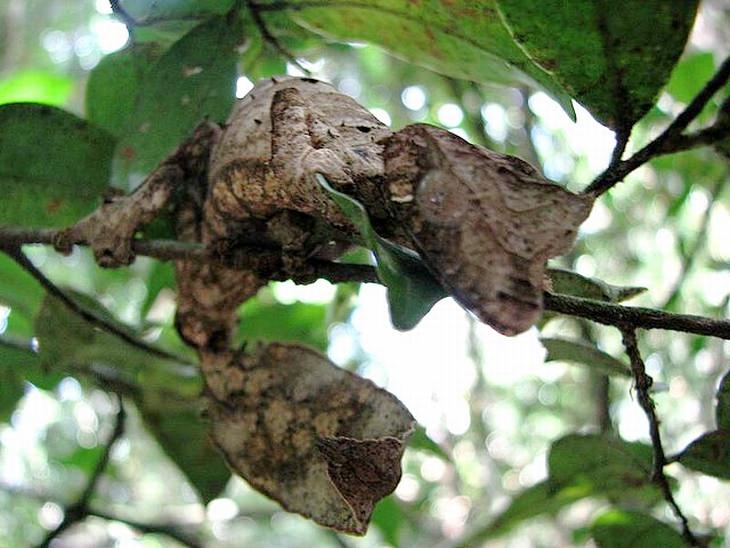
It may be hard to believe that this creature is not a bunch of leaves, but actually, a living gecko. These fascinating Madagascan-endemic geckos are considered to be the masters of camouflage, because of their ability to blend in with their surroundings and their ability to act like decaying leaves. There are 10 species of flat-tailed geckos that are native to Madagascar, all of which have different special traits, such as the ability to appear like tree bark.
Image source: reibai / Flickr

One of the largest species of silk moths in the world is found in Madagascar. Comet moths grow up to 20 centimeters (8 inches) and have tails that extend by 15 centimeters (6 inches). The wings they develop for their adult life have vibrant colors, but unfortunately, their bright colors won't last all that long. After their 2-6 month pupation period, these creatures can only survive for 4 to 5 days, during which they are unable to feed. However, the female can lay up to 170 eggs.
Image source: Frank Vassen / Flickr
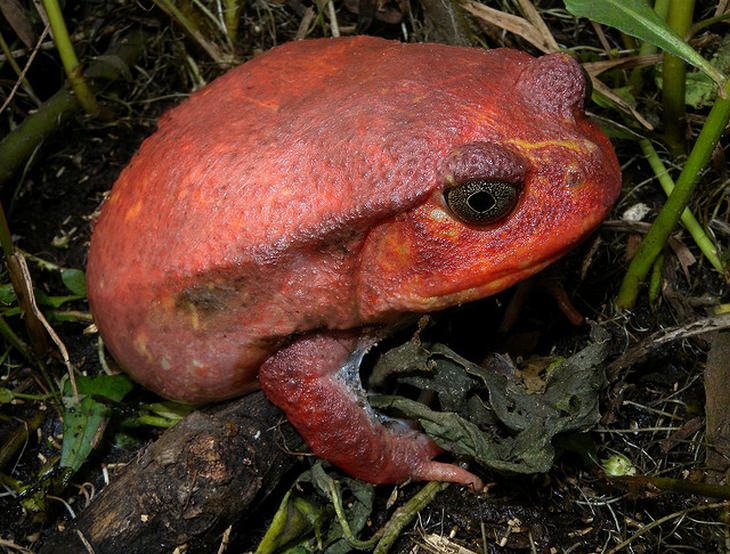
These ambush predators inhabit the northern, wetter parts of Madagascar, where they feed on mostly insects - although they are known to eat anything that is small enough for their mouths. Tomato frogs get their name from the coloration of the females' skin, which is of course, red. Some of their other features are said to be toad-like, including their feet that are not webbed, their smooth toe pads, and the latex-like secretion they emit when threatened.
Image source: Frank Vassen / Flickr
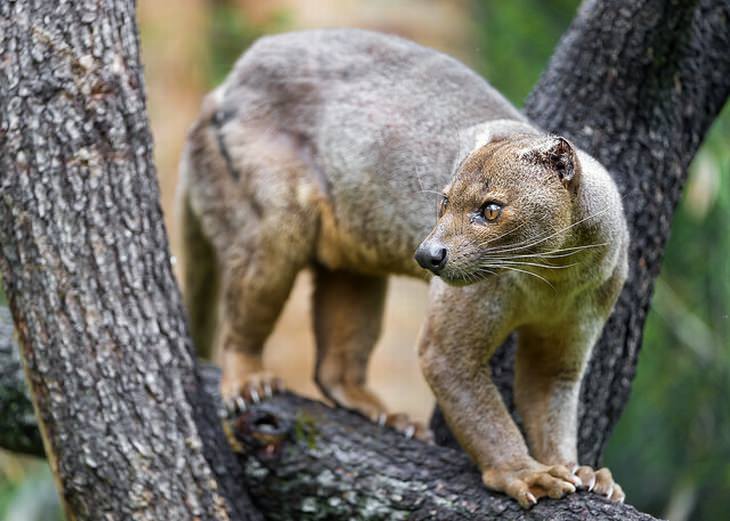
This peculiar creature has been compared to a dog due to its spout, but at the same time even to a cat because of its body. So, what exactly is it? Fossas are actually members of the mongoose family, and are officially the largest mammalian predator in Madagascar. Their body size reaches a striking 2 meters (6.5 ft) (from their snout to the tip of their tail) with long tails and retractable claws that give them great balancing capabilities, as well as agility. Unfortunately, these wonderful creatures are becoming even rarer with time, mostly due to the 90% destruction of their habitat by humans.
Image source: Tambako The Jaguar / Flickr
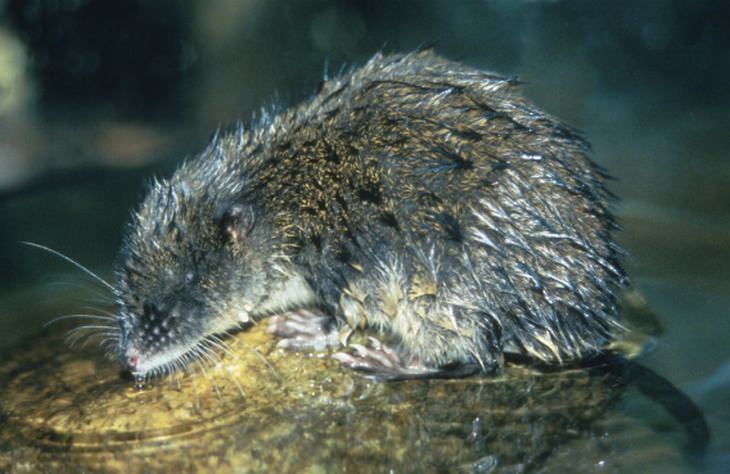
Aquatic Tenrecs are considered one of the rarest animal species in the world. To make matters worse for nature enthusiasts, these creatures are also quite small in size, measuring just 17 centimeters (6.7 inches) in length, making them even more difficult to spot. They are aquatic animals, which explains the purpose of their webbed feet and strong hind-limb muscles. This habitat offers them insects and tadpoles as prey, which they drag to the water's surface and load over their backs, where they control it with kicks from their hind feet.
Image source: Kevin H. Barnes / Mongabay

Madagascar is also home to what is considered to be the rarest duck in the world. In fact, Madagascar Pochards were thought to be extinct up until 2006, when they discovered a small population of 22 Pochards living on Lake Matsaborimena. This medium-sized duck can dive underwater for up to two minutes, to grab hold of invertebrates, seeds and the aquatic plants it preys on. Thanks to a breeding program that started in 2009, the small population of Madagascar Pochards is now steadily increasing.
Image source: Frank Vassen / Flickr
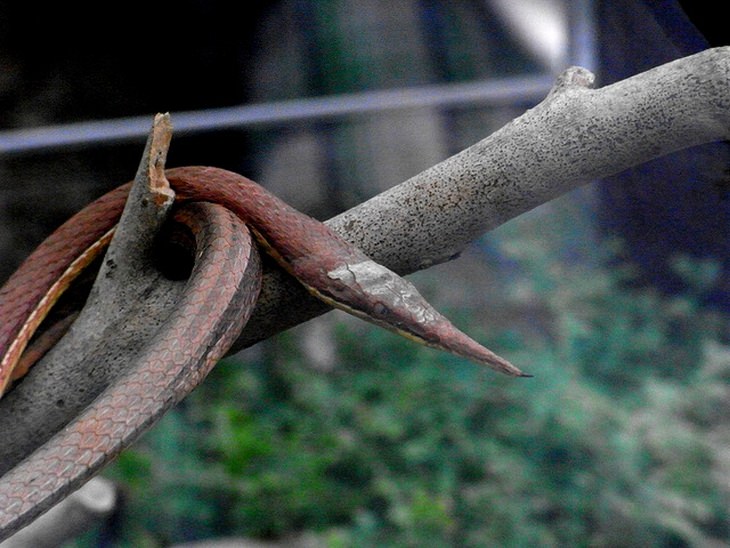
The Malagasy leaf-nosed snake is one of many weird-looking animals native to Madagascar. This snake can be found slithering on branches high up in the trees. What gives them their name and their identity is their long, pointed leaf-like nose, which can stick out of their ambush location while preying, appearing similar to seed pods or leaves. This is another aspect added to their camouflage-adapted bodies, with the color of the skin easily blending in with their surroundings.
Image source: Kumiko / Flickr
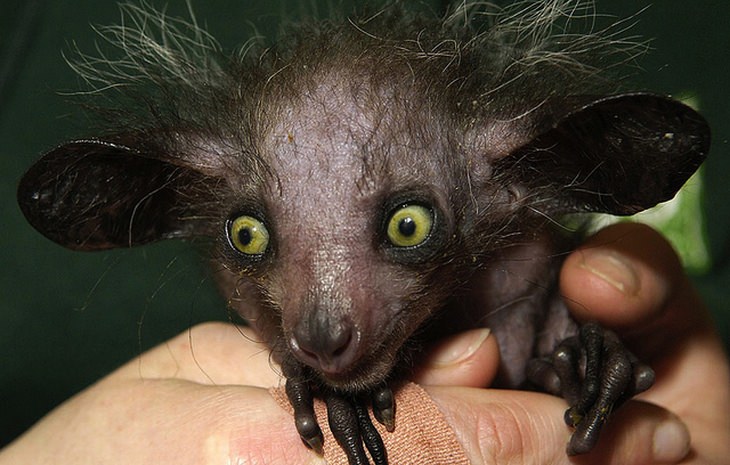
These mysterious-looking nocturnal primates can be found lurking in the trees at night in Madagascar. In fact, their body is adapted for this kind of habitat, with their big toes and nails making it easier for them to clasp to branches and dig insects out of trees. They make use of one bizarre adaptation, which is echolocation, also known to be used by bats. This allows the creature to detect prey using echoes. Because they are nocturnal, it's no surprise that the Aye-ayes have big, sensitive ears and huge eyes, to aid them in their night hunting.
Image source: James Joel / Flickr
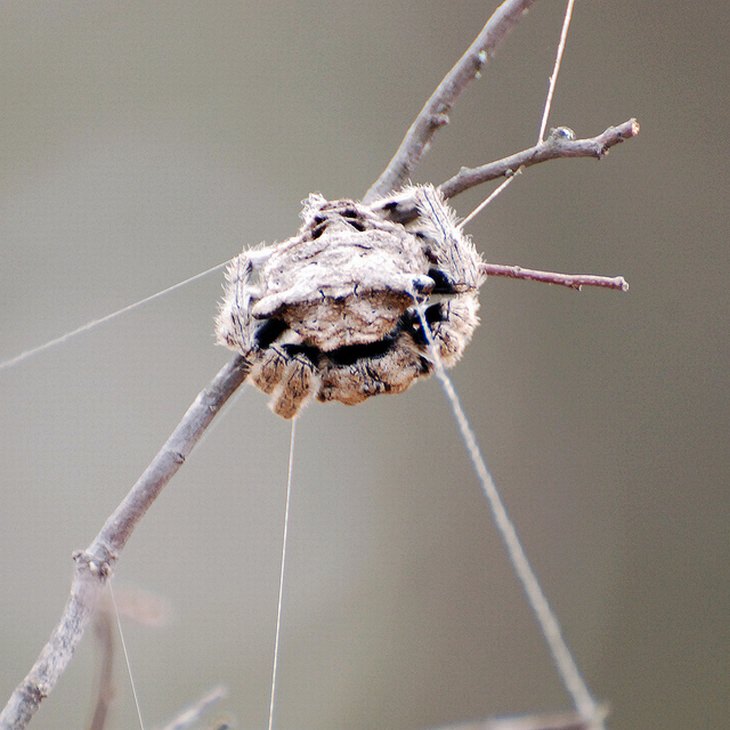
This spider is by far one of the most skilled creatures not only in Madagascar, but in the world. The silk produced by Darwin's Bark Spiders is astoundingly 10 times stronger than Kevlar (a strong synthetic fiber used to reinforce car tires and other rubber products) and is the strongest silk discovered to date. It is no wonder this spider is one talented predator, producing huge webs across streams or rivers, of up to an unbelievable length of 25 meters (80ft), to trap insects. With its body measuring just 2.5 centimeters, this spider is a perfect example of something small being unmistakably powerful.
Image source: Harvey Barrison / Flickr
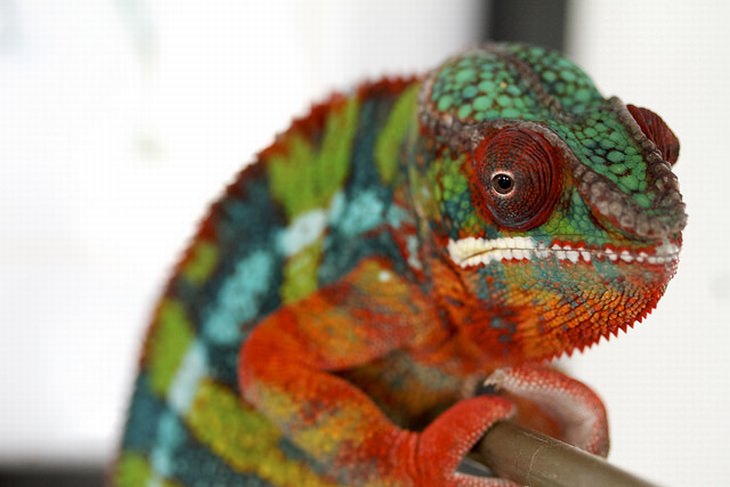
This particular species of chameleon is an exception when compared to other chameleons. Instead of taking on a camouflage appearance, Panther chameleons are vibrantly colored all over. Interestingly, this skin color changes according to their mood. Like many other chameleons though, they can rotate and focus their eyes independently from each other to look at two things at the same time, and they have a long sticky tongue that can easily catch their prey.
Image source: Florence Ivy / Flickr
H/T: Listverse.com